I have been convinced for a while that the goings-on at Greek and Roman temples must have been some versions of what we see at Hindu temples today; a forecourt where the devotees gather and roam, a place/table/altar for offerings, a cella that contains the diet(ies), where the priests do their mumbo jumbo. There would have been much communication between the subcontinent and Europe, after all the languages all belong to the same family of Indo-European language. Sanskrit? While India still practices the religion in the ancient way, Europeans have long been converted to Christianity.
About 45 minutes after the ceremony began, buckets of cinnamon colored bath water from the tooth began to be distributed to the adherents. Holding empty bottles and vessels, some had been waiting for more than two hours. Such faith, of course, is a familiar sight, yet the materialist in me finds it incredulous every time, just looking at that murky water makes me want to gag. What I loved was seeing all the flower offerings. Photos only capture their beauty, not their fragrance. I imagine ancient Greece and Rome were not so prodigious with such sumptuous flora given their climate, therefore clay figures sufficed as votive offerings.
The inner sanctum of the Temple of the Tooth is guarded by elephant tusks,and hidden behind a curtain
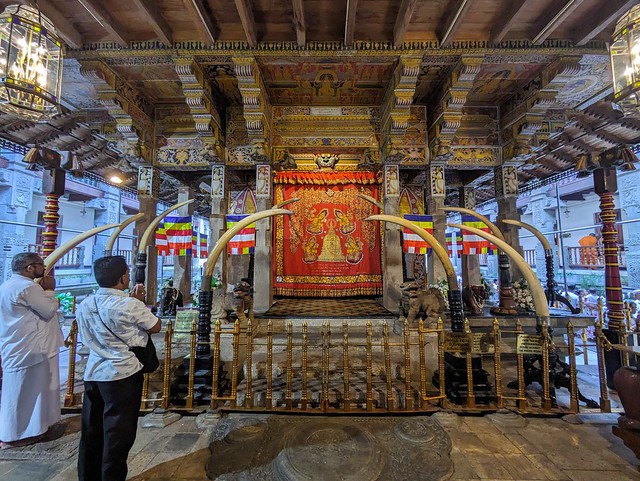
Flower Offerings are given on the 2nd floor of the temple, and the slow moving line up the stairs seemed endless.
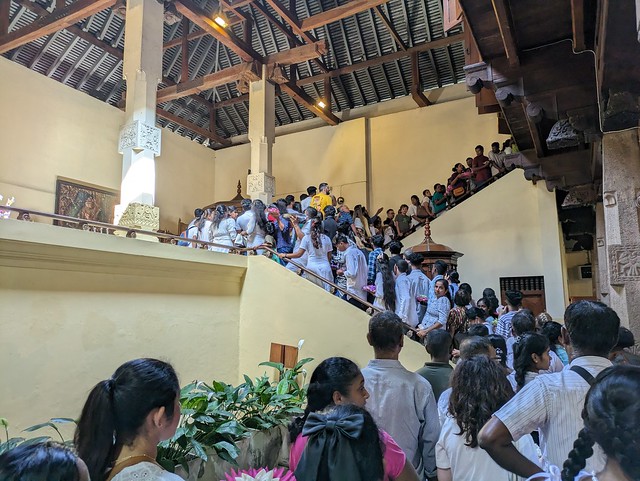
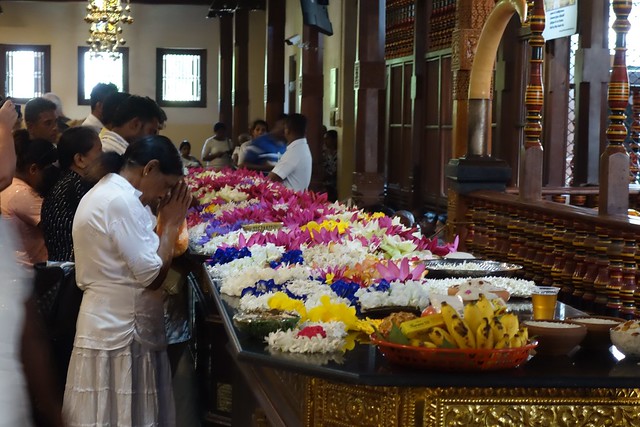
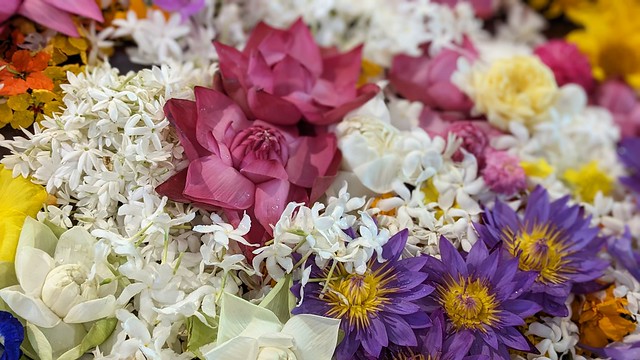
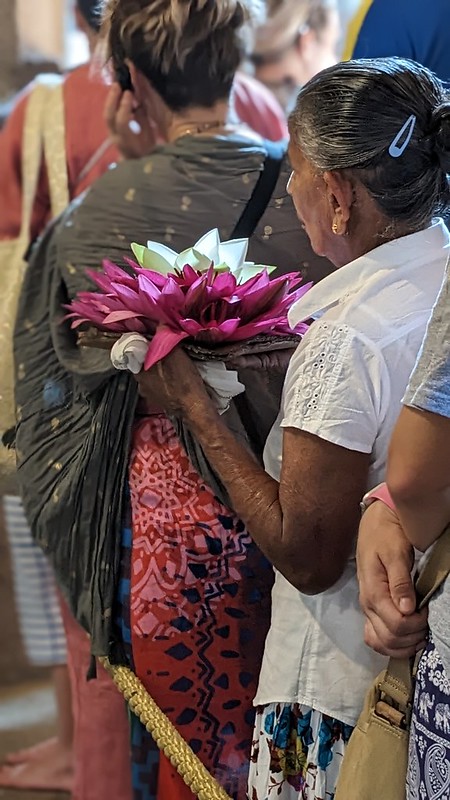
In the photo below you can see the first floor inner sanctum guarded by the tusks, and the Japanese-like grill of the second floor directly above.

A few photos of the "action"; that is, various costumed priests and functionaries entering and leaving the inner temple, plus occaisonal parading by the drummers.

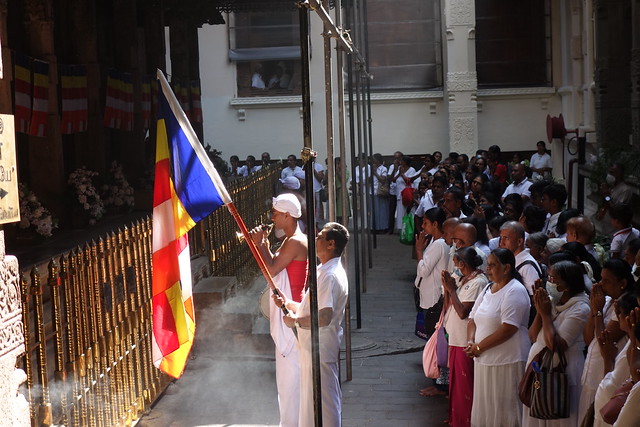
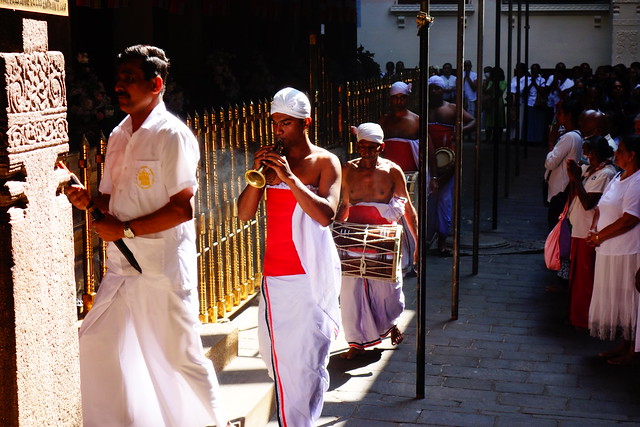
A few more shots of the drummers and and single flutist.

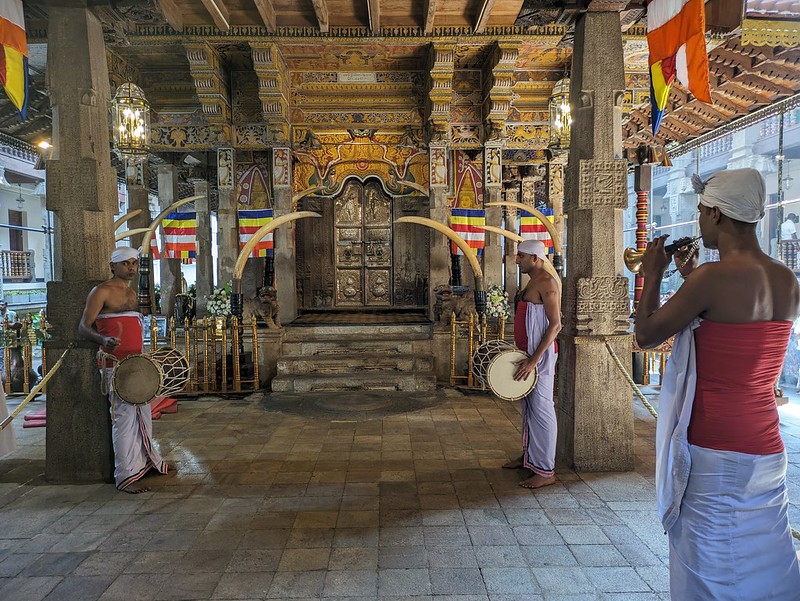
Distribution of bath water. The priest admonished more than several line-jumpers.
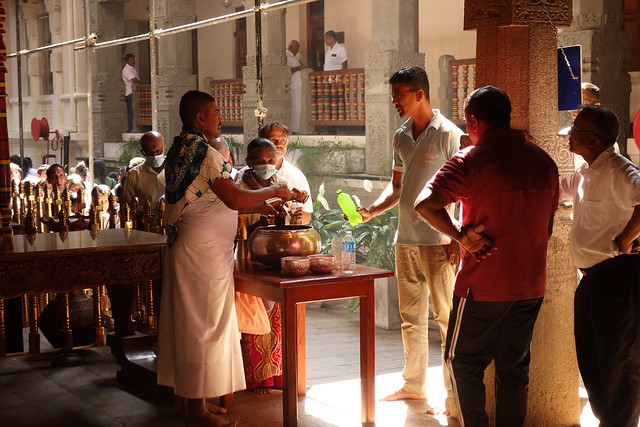

The Temple of the Tooth is located on a lake in central Kandy (1st below - far right). The most prominent architectural feature is an octagonal room (2nd and 3rd below).
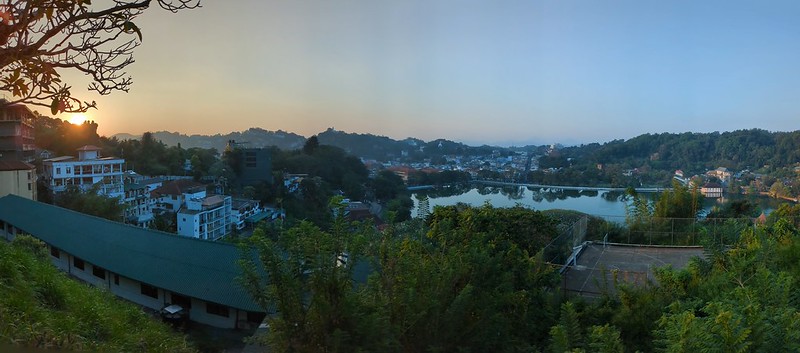


The front of the Temple of the Tooth was reduced to rubble in 1998 by a truck bomb, and security is still tight several blocks away.
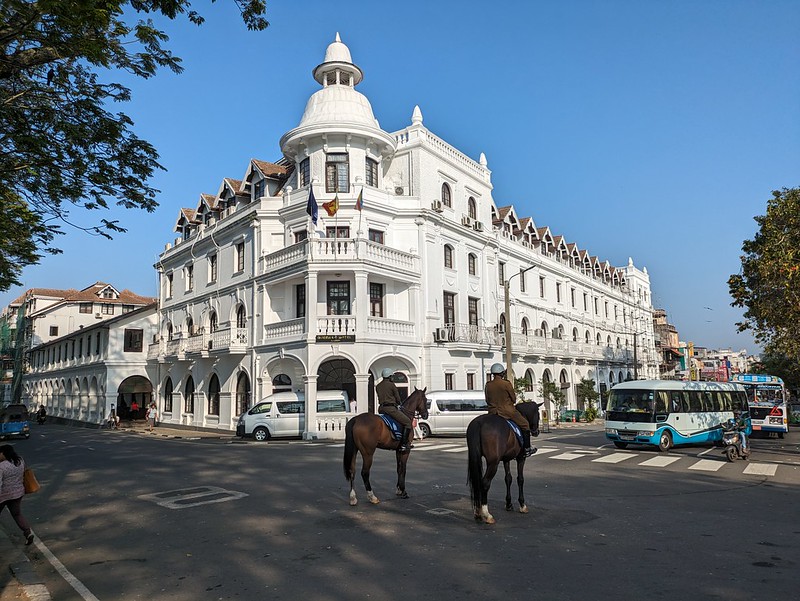
Here are more than several (short, I promise) videos of the tooth washing proceedings in chronological order. Turn on your audio.

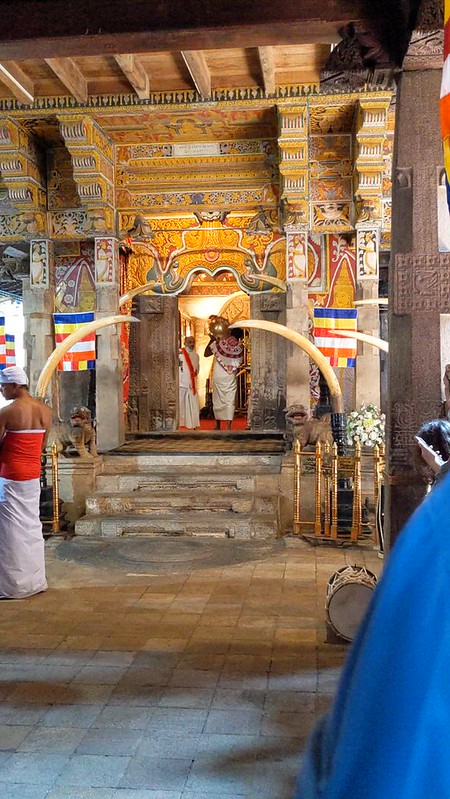

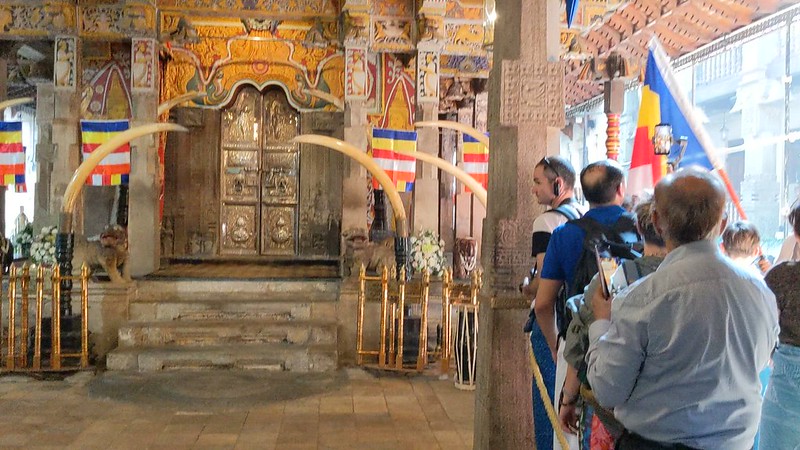
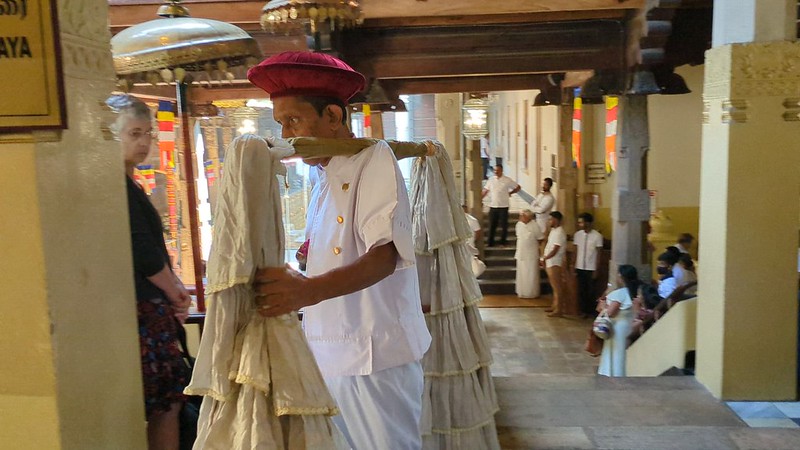

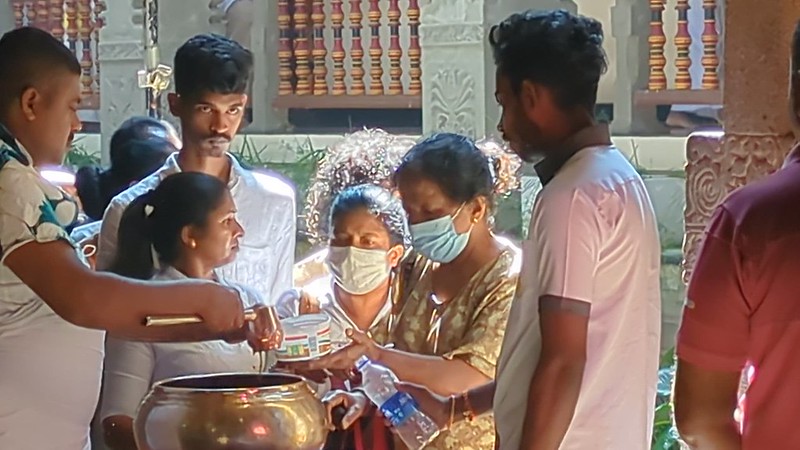

1 comment:
This is definitely the most unusual festival! Liz
Post a Comment